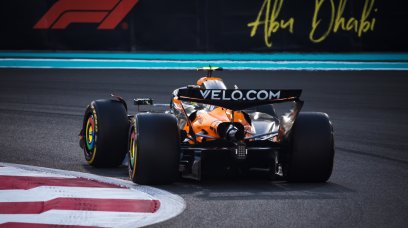Adrian Newey has described F1 drivers as "wonderfully intuitive animals" as he detailed the major advantages of Aston Martin's all-new simulator.
Newey joined the team as managing technical partner earlier this year from Red Bull, with his full focus being on designing Aston's car for the sweeping changes to the technical regulations for 2026.
As Aston prepares for that, it has invested heavily in a brand-new factory, including an all-new driver-in-the-loop simulator, something he felt could take multiple years to fully calibrate and optimise when speaking earlier this year at the Monaco GP.
The simulator has become an even more important tool for F1 teams to gather data given the lack of on-track testing permitted, with Newey explaining how the tool is vital to ensuring trackside operations and performance run as smoothly as possible
"When I started, there were no onboard data recorders, no telemetry, and the input of the driver was absolutely critical, because the only clue the race engineer had about how the car was behaving was really from what the driver told him," Newey explained in a video with Aston Martin sponsor Maaden.
"As we've moved into the data age, where we have literally thousands of sensors on the car, transmitting in real time, and we can tell a great deal about what the car is doing. Ultimately, the reason it's doing that very often is down to the driver.
"It's down to the driver's input. Drivers are very often wonderfully intuitive animals. They will adapt their driving to suit the strengths and weaknesses of the car. If you want to try to find out what those weaknesses are, then you have to interrogate the driver and force him to think about it, and force him to say, what are those weaknesses.
"The driver still has an absolutely vital role. An example of that is that all the Formula 1 teams now have driver-in-the-loop simulators. These are very much engineering tools. They're not for driver development, primarily.
"They're for engineering tools so that we can evaluate different setups before we go to the next race, or indeed, fundamental research, suspension geometry, aerodynamic map shapes, those sorts of things that we can't normally change at a race meeting, but we want to know for future development direction.
"Why do we need the driver in the loop rather than just doing it as a pure offline simulation? The reason is that none of us have managed to create a good enough driver model that can effectively articulate what that model, that synthetic model, is feeling.
"So we need the human feel it and then tell us what he feels. The driver role is as important as it's ever been.
"You could argue in some ways it's even more important because we now have the ability to combine that directly with the data to understand exactly what the car is doing and what we need to do to make it faster."
Don't miss out on any of the Formula 1 action thanks to this handy 2026 F1 calendar that can be easily loaded into your smartphone or PC.
Download the calenderMost read
In this article





















Join the conversation!